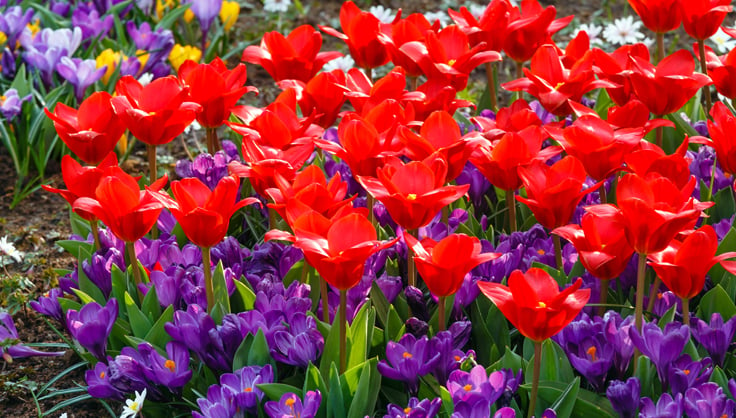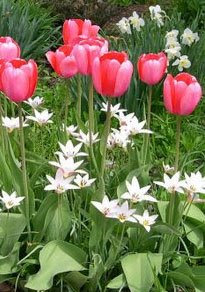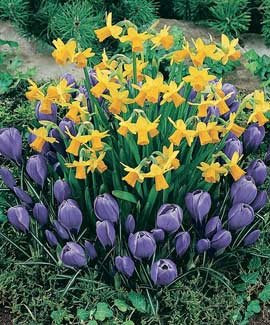Dig Once, Plant Twice

Layered bulb-planting ensures a lively springtime display.
Daffodil bulbs from half a dozen different mail-order companies landed on my back porch, followed by a couple of 50-bulb tulip collections. The garden center had some new Asiatic and Oriental lilies I couldn’t pass up. And somewhere in my travels, I’d purchased a hundred or so muscari, scilla, chionodoxa, and allium bulbs. It was easy to envision the beauty of my spring garden as I thumbed through catalogs and perused the garden center bins, but getting all those bulbs into the ground takes some serious work.
My grandmother frequently chided me for “biting off more than you can chew,” especially in the garden. I can just see her now, chuckling and shaking her head at my current project.

As a regular glutton for punishment, I’ve learned some timesaving shortcuts and efficiencies in the garden, though. One of them is the trench method for planting bulbs. I find it easier to dig one big hole that’s wide enough to accommodate a group of bulbs instead of digging individual holes. A 50-bulb tulip collection, for example, needs a 10-square-foot hole, 6 to 8 inches deep.
The best and most efficient part of trench planting is that it allows for bulb layering. After I set all the tulips or daffodils in the bottom of the trench, I cover them with a couple of inches of soil and then plant some smaller bulbs in the same hole. Viola! Dig once and plant twice.
Layering is great for combining bulbs with similar bloom times to get a beautiful and easy display. Some of my favorite combos include:
- Dwarf iris with snowdrops or snow crocus
- Early emperor tulips with scilla or chionodoxa
- Daffodils with muscari or giant crocus
- Miniature daffodils with early to mid-season tulips
- Tall tulips with shorter tulips
- Tall alliums with shorter alliums
- Windflowers with daffodils or tulips

Digging one hole and planting two or more bulbs that bloom in different seasons is another way to use time and space efficiently. I think of this method as “fireworks planting”: just as one bloom is finishing, another is coming up to take its place. Consider a few of these combinations:
- Daffodils or tulips and summer-blooming lilies
- Daffodils or tulips with alliums
- Early Asiatic lilies with late-summer Oriental lilies
- Crocus and Dutch iris
- Early emperor tulips with late-blooming tulips
- Spring or summer-blooming bulbs with autumn crocus or colchicum
The trick to successful bulb layering is to plant each type at the correct depth. Put the largest bulbs at the bottom and add enough soil for the next smaller bulb, and so forth. When I plant bulbs of the same size together, such as daffodils and lilies, I put them at the same depth, but may use different spacing. Daffodils, for example, are planted 6 inches apart, while Oriental lilies are spaced 10-12 inches apart.
I may be a glutton for punishment, according to Gramma, but my spring garden is a feast for the eyes!
Print this Article:
Get the Dirt
Stay up to date on new articles and advice. Please fill out the information below.

